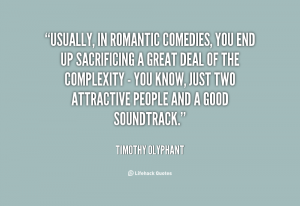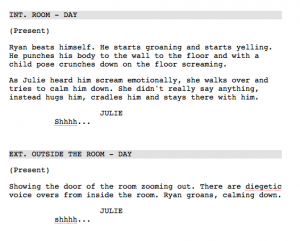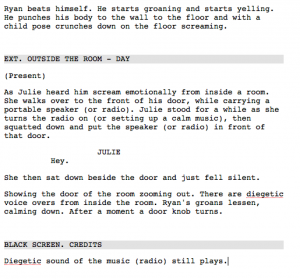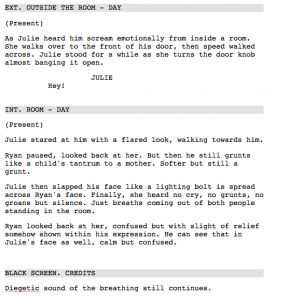PB 2
Audio Player
EXEGESIS-
Audio sketch “What a Day”.
“What a Day” (2016) is an experimental audio-sketch that intends to define the romance comedy genre. The approach of this sketch is to challenge the ideological boundaries (as well as its ideological influences) created throughout romantic comedy films by bending certain popular tropes and conventions while discard some others. Often stories are divided up according to patterns of conventions and there comes genres as boundaries. As Ishiguro had mentioned, “I get worried when readers and writers take these boundaries too seriously…” (2015). Hence, what would challenge this strict grouping is to create or “sketch” a genre that removes the use of one of its popular tropes and still proves the piece to be a romantic comedy piece.
According to Mortimer (2010), romance comedy is known to consist of displacement and disruption in its narrative content that is complemented with gag, comical suspense or surprise as well as the subversion of the adult world. These films are predominantly predictable; with viewers know the basic happy ending and who the characters will end up with. Rom-com films rely greatly on the journey of the characters to achieve that happy-ending. “What a Day” is an example of a rom-com sketch that denies this popular happy-ending element while comprises other tropes and conventions. Additionally, the audio piece ends ambiguously, without the listeners knowing if the couple will end up together or not. As the audio piece is a parody, it defines the typical disruptive obstacles in rom-com ideologies and mocks the romance out of the couple. While its parody imitation includes the use of humour, verbal exaggeration and subversion of the adult world with the “truth or dare” plot, the typical pop romantic music is replaced entirely with a comedic-tone music. Garwood (2000) argues, “The virtues of the ‘old-fashioned’ visions of romance held by the songs have to be accepted as credible and relevant”. The background music complemented in “What a Day” is not one of those pop songs holding traditional romance semiotics. Furthermore, the experimentation of this background music and narrative component supports that without the satisfying ending, “What a Day” is still a piece about romance and relationship and it is still up-lifting. The audio text is about the romance of the two couple and is comedic because it is a parody of that archetypal romance (beside it having an ambiguous ending).
Romance comedy is indeed about the “celebration of love and relationships while lifting central characters out of the tedium and loneliness of their normality” (Mortimer, 2010). But rom-com can also be seen as a parody of that celebration due to its construction of made-up idealisation about the happily ever after as one reconcile with another. As “What a Day” portrays, rom-com is like looking at a relationship on truths or lies basis. As explained by Grindon (2011) Hollywood rom-com promotes “widespread illusions that everyone was destined to meet their true love or that lovers united in marriage lived happily ever after”. Therefore, the genre’s usual components generates audience’s blissful daydreams that there is always a happy ending after a number of obstacles, causes them to be dissatisfied with their own relationships (Grindon, 2011). The audio piece, through its experimentation, proves itself to be a rom-com without a happily ever after. Yet, it also implements the idea that relationships are not always blissful and heaven-like, turning audiences to the worldly reality rather than constructed rom-com ideologies.








